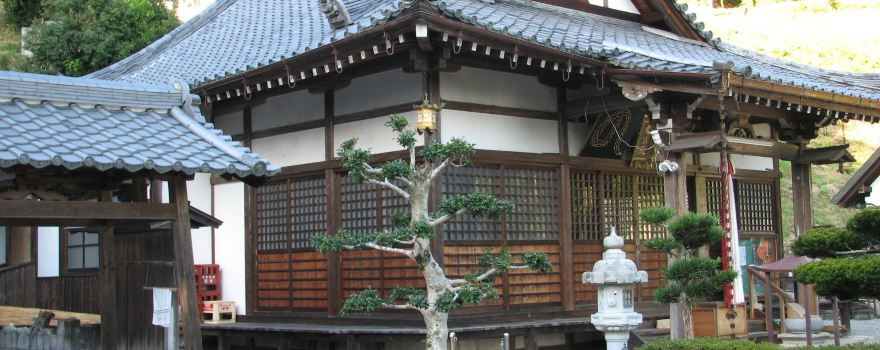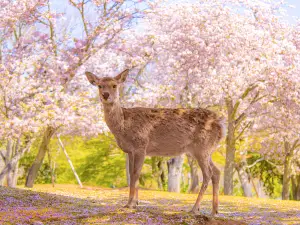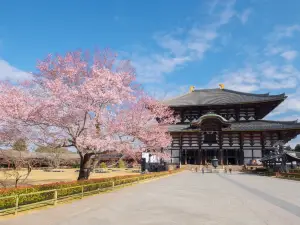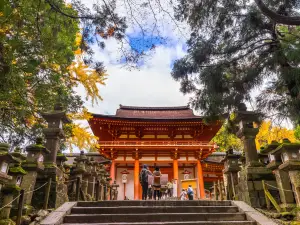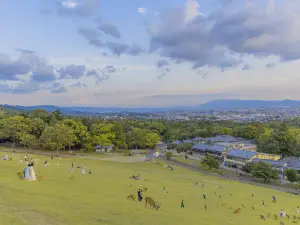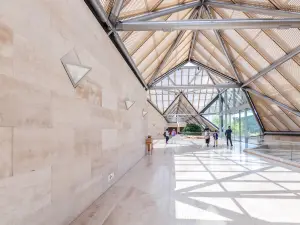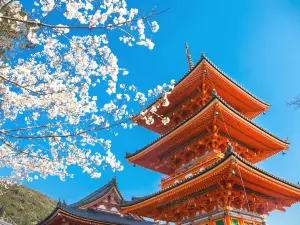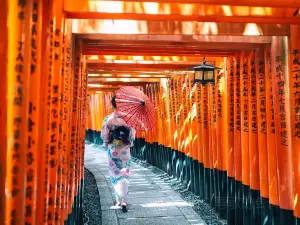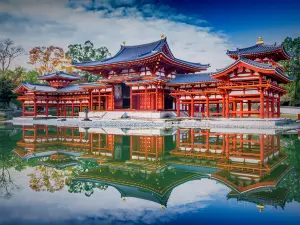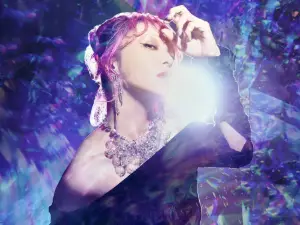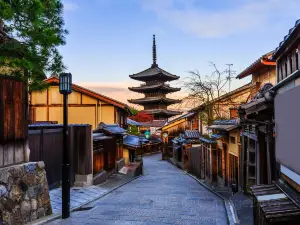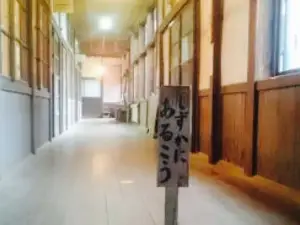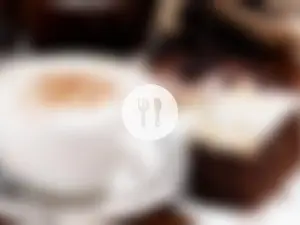Minamiyamashiro
Things to do in Minamiyamashiro (2025): Top nearby activities,popular attractions,itinerary planning,weather,accommodation,food,transportation,and more - all you need to know (updated August, 2025) | Trip.com
About Minamiyamashiro
Minamiyamashiro Local Experiences Map
View local experiences on map
Things to do in Minamiyamashiro
What to do
Looking for things to do in Minamiyamashiro? We provide up-to-date info on everything from must-see scenic spots to local hangouts.
View more
Nara Park
7.3
4.7/51,941 Reviews
Night Attractions
Open year round, 24/7
 苏河家园:“When traveling to Japan, you will come to Nara Park, which covers a vast area and combines historical sites with natural landscapes. There are free-living sika deer and world heritage sites such as Todaiji Temple and Kasuga Taisha Shrine. Tourists can feed the deer with senbei at close range and experience unique interaction. It is worth a visit.”
苏河家园:“When traveling to Japan, you will come to Nara Park, which covers a vast area and combines historical sites with natural landscapes. There are free-living sika deer and world heritage sites such as Todaiji Temple and Kasuga Taisha Shrine. Tourists can feed the deer with senbei at close range and experience unique interaction. It is worth a visit.”Tōdai-ji
6.7
4.6/51,070 Reviews
Historic buildings
Open tomorrow at 07:30-17:30
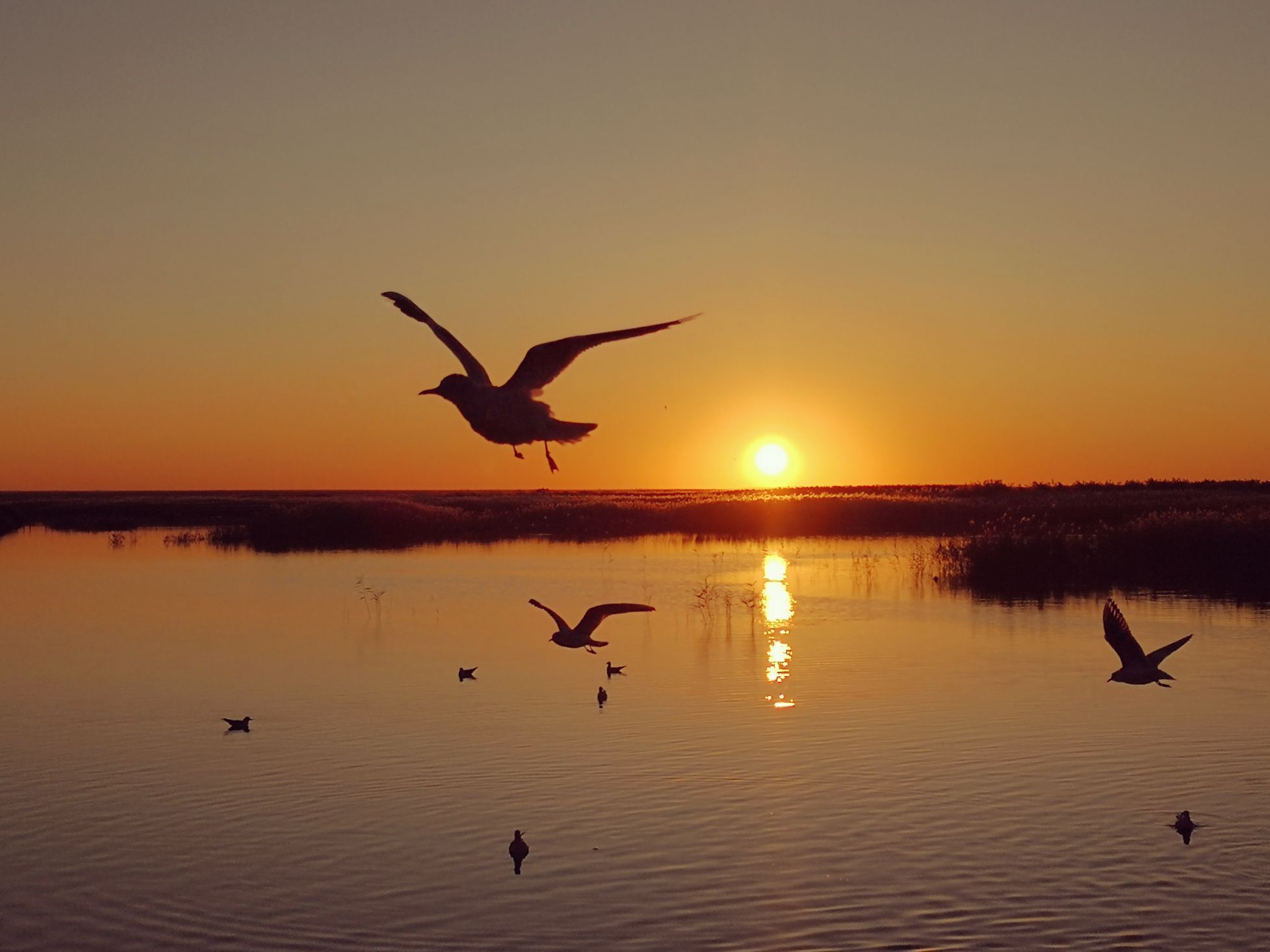 晓舟工作室:“Going to Nara, if you don't go to Dongdaeji, it's a pity. Because you will miss the hall of the world's largest wooden structure, you will also miss the great opportunity to feel the charm of Tang Feng, and it is even more difficult to experience the joy of Liang Sicheng and other Chinese architectural masters who found Wutaishan Foguang Temple!”
晓舟工作室:“Going to Nara, if you don't go to Dongdaeji, it's a pity. Because you will miss the hall of the world's largest wooden structure, you will also miss the great opportunity to feel the charm of Tang Feng, and it is even more difficult to experience the joy of Liang Sicheng and other Chinese architectural masters who found Wutaishan Foguang Temple!”Kasugataisha Shrine
6.2
4.6/5857 Reviews
Historic buildings
Open tomorrow at 06:30-17:30
 风起鹰鲨:“Near the highest point of Nara Park, it takes more than 20 minutes to walk after getting off the bus. There are many lights and deer along the way. Pay attention to the business hours. If you go too late, you can't get in. If you have been to Kasuga Taisha, you can go to Wakakusa Mountain to watch the sunset. You must arrive before 17:00, otherwise the ticket seller will lock the door after get off work and you can only go out but not in.”
风起鹰鲨:“Near the highest point of Nara Park, it takes more than 20 minutes to walk after getting off the bus. There are many lights and deer along the way. Pay attention to the business hours. If you go too late, you can't get in. If you have been to Kasuga Taisha, you can go to Wakakusa Mountain to watch the sunset. You must arrive before 17:00, otherwise the ticket seller will lock the door after get off work and you can only go out but not in.”Mount Wakakusa
6.0
4.5/5220 Reviews
Mountain climbing
Open tomorrow at 09:00-17:00
 风起鹰鲨:“The scenery is beautiful. You must buy tickets before 17:00, otherwise you can't get in. There are many deer inside. Almost half of the tourists are Chinese compatriots. Climb to the top of the peak and watch the sunset. It's very pleasant. Walk carefully, the mountain is a bit steep, watch the children, there is a toilet inside, the entrance and exit are different, and you will reach Todaiji Temple when you go out.”
风起鹰鲨:“The scenery is beautiful. You must buy tickets before 17:00, otherwise you can't get in. There are many deer inside. Almost half of the tourists are Chinese compatriots. Climb to the top of the peak and watch the sunset. It's very pleasant. Walk carefully, the mountain is a bit steep, watch the children, there is a toilet inside, the entrance and exit are different, and you will reach Todaiji Temple when you go out.”MIHO MUSEUM
5.4
4.6/568 Reviews
MuseumsThemed exhibition halls
Opening hours: September 20 10:00-17:00 (admission ends at 16:00)
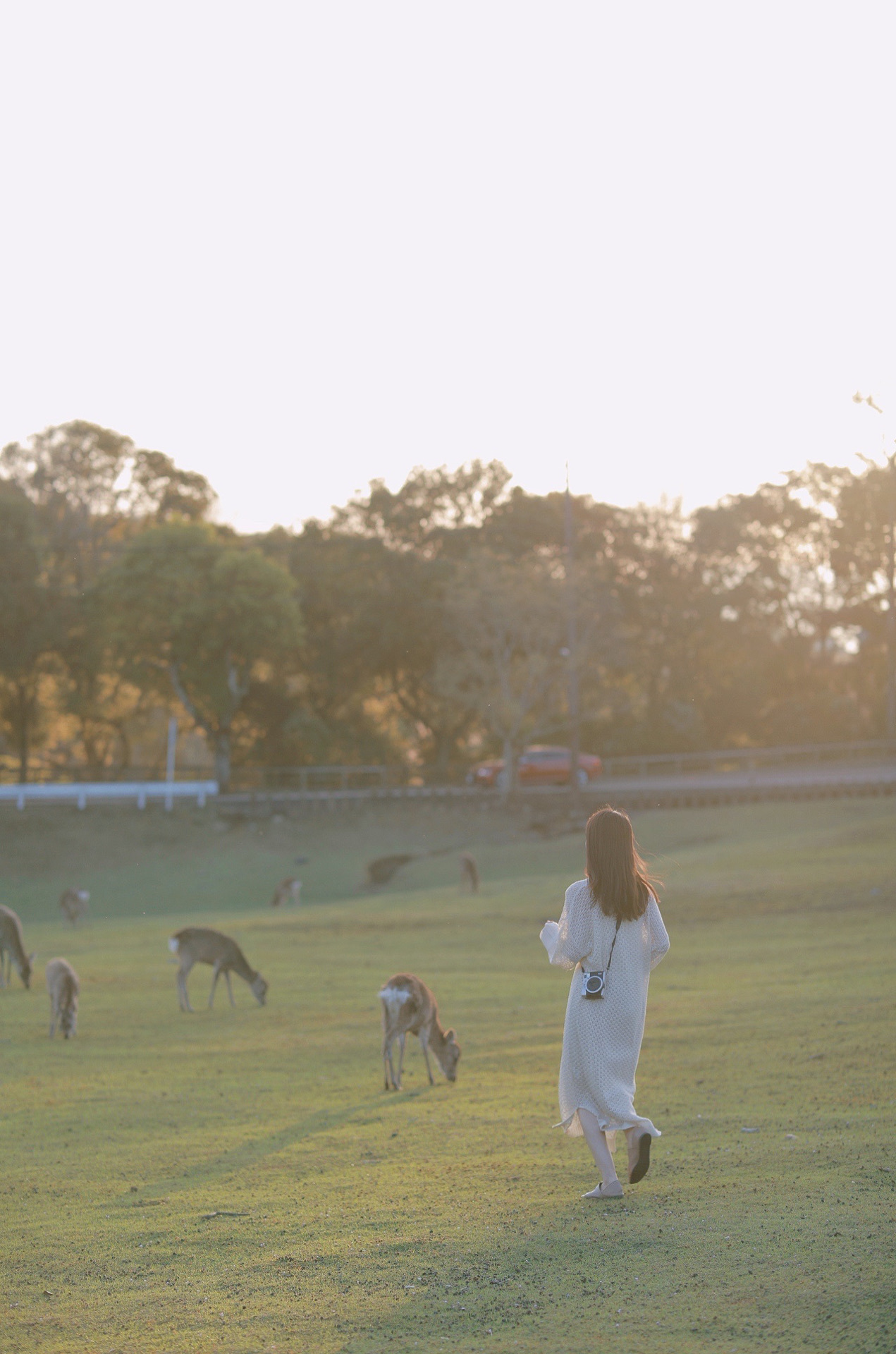 Rei_大阪:“▪️▫️MIHO Pei's Peach Blossom Spring▪️▫️
——▪️▫️
The world-renowned architect Pei, who designed the glass pyramid of the Louvre Museum in Paris, designed the MIHO Art Museum. The design concept comes from Tao Yuanming's "Peach Blossom Spring" (I recited it a lot when I was in school and cried)
The natural landscape around the building is well preserved, and 80% of the entire building is hidden underground, blending emotions with the scenery. While appreciating art works, you can also feel the natural scenery. More people come here because of Pei's architecture than the collections. I'll tell you that LV's fashion show was held here in a certain year. Please search for the beautiful photos yourself🔍
——▪️INFO▫️
▪️【Tickets】1300yen/person
▪️【Business hours】10:00-16:00 (during the epidemic) Reservations must be made in advance, and credit card payments can be made directly on the official website or reservations can be made by phone to purchase tickets on site.
Closed on Mondays.
▪️【Food】There are two restaurants (restaurant Peach Valley/cafe Pine View). The cafe and restaurant in the museum provide food without pesticides, fertilizers, or additives. You can drink coffee and afternoon tea to enjoy the scenery. But when we went there on the weekend, it was sold out. I will go there next time with a little regret~
▪️【Travel】You can drive yourself for a round trip, and there are many free parking lots in the museum. It is a half-hour drive from "Mitsui Outlet Shopping City (Shiga Ryuo Store)". You can continue shopping after visiting.
▪️【Design】The geometric design space made of glass is naturally lit through large floor-to-ceiling windows, giving the illusion of being surrounded by nature. I feel that the ticket here is worth it [snickering]
▪️【Works】The museum is divided into north and south exhibition halls. The north exhibition hall (2F) is a special exhibition area, and the works on display are generally limited in time. The south exhibition hall (1F, B1F) is the world's ancient art.
▪️【Recommendation】It is recommended to go during the cherry blossom season. The road leading to the art museum is full of cherry blossoms, and the tunnel will also be reflected in pink, just like being in a paradise.
——▪️▫️
【Recall】
When the forest ends and the water source comes out, there is a mountain. There is a small opening in the mountain. It seems as if there is light. I left the boat and entered through the opening. It was very narrow at first, but it was passable. After walking a few dozen steps, it suddenly became clear.....”
Rei_大阪:“▪️▫️MIHO Pei's Peach Blossom Spring▪️▫️
——▪️▫️
The world-renowned architect Pei, who designed the glass pyramid of the Louvre Museum in Paris, designed the MIHO Art Museum. The design concept comes from Tao Yuanming's "Peach Blossom Spring" (I recited it a lot when I was in school and cried)
The natural landscape around the building is well preserved, and 80% of the entire building is hidden underground, blending emotions with the scenery. While appreciating art works, you can also feel the natural scenery. More people come here because of Pei's architecture than the collections. I'll tell you that LV's fashion show was held here in a certain year. Please search for the beautiful photos yourself🔍
——▪️INFO▫️
▪️【Tickets】1300yen/person
▪️【Business hours】10:00-16:00 (during the epidemic) Reservations must be made in advance, and credit card payments can be made directly on the official website or reservations can be made by phone to purchase tickets on site.
Closed on Mondays.
▪️【Food】There are two restaurants (restaurant Peach Valley/cafe Pine View). The cafe and restaurant in the museum provide food without pesticides, fertilizers, or additives. You can drink coffee and afternoon tea to enjoy the scenery. But when we went there on the weekend, it was sold out. I will go there next time with a little regret~
▪️【Travel】You can drive yourself for a round trip, and there are many free parking lots in the museum. It is a half-hour drive from "Mitsui Outlet Shopping City (Shiga Ryuo Store)". You can continue shopping after visiting.
▪️【Design】The geometric design space made of glass is naturally lit through large floor-to-ceiling windows, giving the illusion of being surrounded by nature. I feel that the ticket here is worth it [snickering]
▪️【Works】The museum is divided into north and south exhibition halls. The north exhibition hall (2F) is a special exhibition area, and the works on display are generally limited in time. The south exhibition hall (1F, B1F) is the world's ancient art.
▪️【Recommendation】It is recommended to go during the cherry blossom season. The road leading to the art museum is full of cherry blossoms, and the tunnel will also be reflected in pink, just like being in a paradise.
——▪️▫️
【Recall】
When the forest ends and the water source comes out, there is a mountain. There is a small opening in the mountain. It seems as if there is light. I left the boat and entered through the opening. It was very narrow at first, but it was passable. After walking a few dozen steps, it suddenly became clear.....”Kiyomizu-dera Temple
7.9
4.7/53,344 Reviews
Historic buildingsNight view
Open tomorrow at 06:00-18:30
 mosy2018:“I ran around,
It was not easy to walk to this temple.
It was very strenuous to go up the slope,
even if there were no steps.
When I arrived at the temple gate,
there were a lot of people.
They gathered in front of the temple to take pictures,
and it was not easy to wait for a group of people to take pictures.
After taking pictures, I went in to visit directly.
There was a place for divination,
and there were quite a lot of people.
The temple was looming in the mountains,
and it was said that it had a different flavor under the red maple leaves in autumn.
It was beautiful from a distance and close up,
and it was worth the trip.”
mosy2018:“I ran around,
It was not easy to walk to this temple.
It was very strenuous to go up the slope,
even if there were no steps.
When I arrived at the temple gate,
there were a lot of people.
They gathered in front of the temple to take pictures,
and it was not easy to wait for a group of people to take pictures.
After taking pictures, I went in to visit directly.
There was a place for divination,
and there were quite a lot of people.
The temple was looming in the mountains,
and it was said that it had a different flavor under the red maple leaves in autumn.
It was beautiful from a distance and close up,
and it was worth the trip.”Fushimi Inari Taisha
7.4
4.7/52,235 Reviews
Historic buildingsNight view
Open year round, 24/7
 mosy2018:“I ran around and walked around.
This place climbs up the stairs,
step by step,
looking at the words on the pillars on both sides with each step,
it feels very meaningful.
The higher you go,
looking down at the dark crowds of people below,
the more you feel superior,
a feeling of looking down at all the mountains.
It is said that there are more than a thousand pillars in this place,
lined neatly on both sides,
the scenery is very good,
a very good spot for physical exercise.”
mosy2018:“I ran around and walked around.
This place climbs up the stairs,
step by step,
looking at the words on the pillars on both sides with each step,
it feels very meaningful.
The higher you go,
looking down at the dark crowds of people below,
the more you feel superior,
a feeling of looking down at all the mountains.
It is said that there are more than a thousand pillars in this place,
lined neatly on both sides,
the scenery is very good,
a very good spot for physical exercise.”Byodo-in Temple
5.9
4.7/5284 Reviews
Historic buildings
Open tomorrow at 08:45-17:30 (admission ends at 17:15)
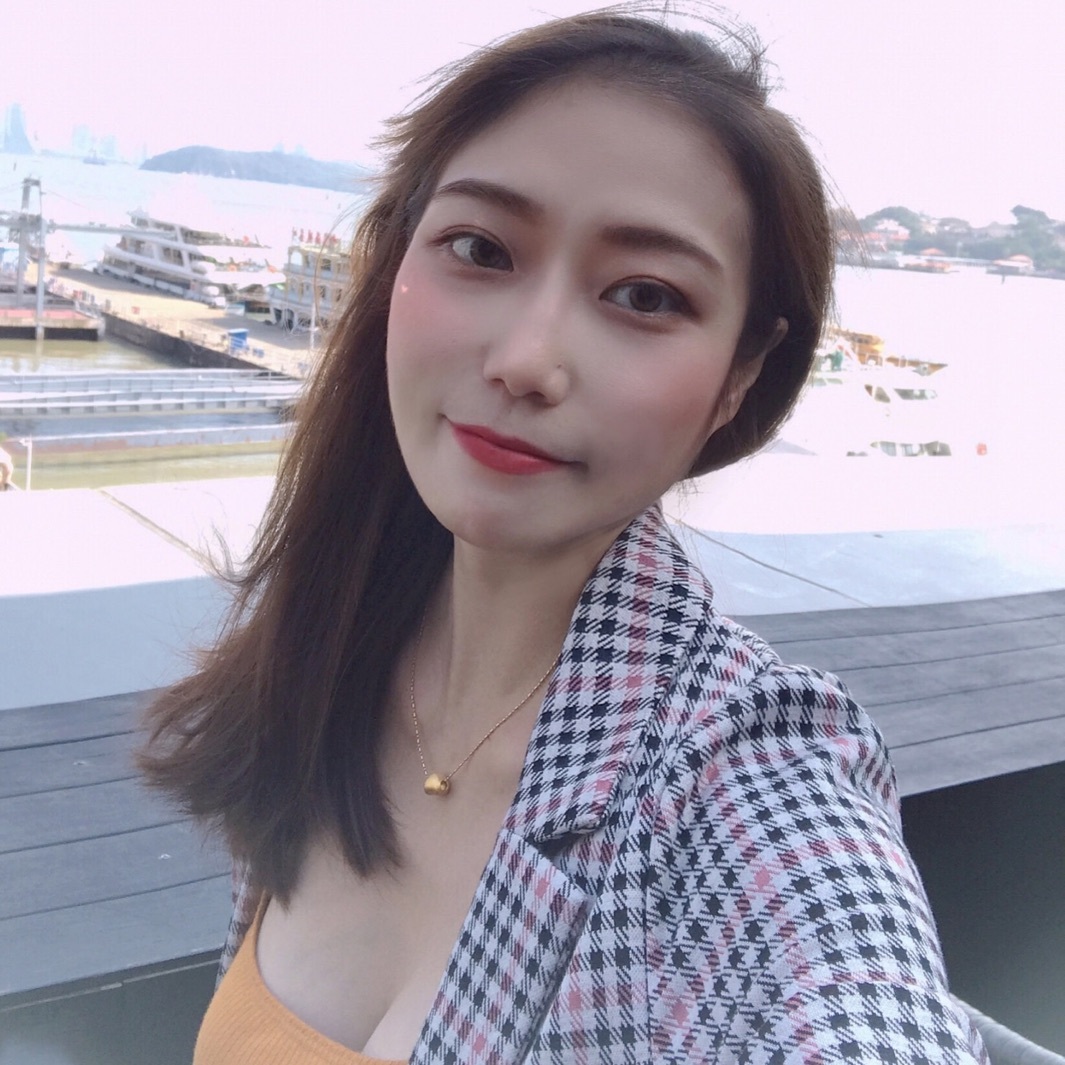 一直在路上的猫:“It is a temple garden with a pond and spring boat tour style in the Heian period. It is a must-see when visiting Uji. The ticket is 600 yen, and the ticket for the Hoshokan alone is 300 yen more, but you have to wait for 50 people every 20 minutes to enter, and you are not allowed to take photos inside. So I didn't go into the Hoshokan.
• Historical evolution: During the Zhenguan period, Minamoto Ryū opened a villa, and many emperors built villas here afterwards. In 998, Fujiwara Michinaga got this place and rebuilt the garden house. In 1052, Fujiwara Yorimichi rebuilt it into Byodoin, and in 1062, the house was abandoned for a temple. After the 12th century, the Hokke Hall and the Five Halls were successively built. In 1336, most of the courtyard was destroyed by war, and it was gradually rebuilt. It was listed as a World Cultural Heritage in 1994.
• Architectural features: Byodoin is centered on the Aji Pond. The Phoenix Hall is located on an island in the pond, forming a complete axis layout with the ruins of the small imperial palace on the east bank. This layout has had a profound impact on buildings such as Toba Imperial Villa and Hojuji Temple in Kyoto. The Phoenix Hall is in the Tang Dynasty style, with a symmetrical central axis in the plane and elevation, both resembling a phoenix. The Central Golden Hall and the Wing Corridor Building have overlapping brackets, high eaves, and a phoenix carved on the main ridge, as if a phoenix spreads its wings. It is regarded as a classic of ancient architecture.
◦ Phoenix Hall: The official name is "Amitabha Hall". Because there is a golden bronze phoenix statue on the roof, it has been called "Phoenix Hall" since the Edo period. It combines national treasures such as painting, architecture, crafts and sculptures in one hall. The design concept imitates the Pure Land of Paradise. The plane resembles the flying shape of a phoenix. The main hall is the phoenix body, the left and right corridors are the phoenix wings, and the back corridor is the phoenix tail. The hall enshrines the seated statue of "Amitabha Tathagata Buddha", and the walls are painted with the Eight Phases of Sakyamuni, the Nine Pure Land Transformations, and the Cloud Offerings.
◦ Guanyin Hall: Built in the 13th century, the hall enshrines the statue of Guanyin Bodhisattva. It was rebuilt from the ruins of a Buddhist temple in the Kamakura period and is an important cultural property of Byodo-in Temple.
◦ Bell Tower: There is a three-ton bronze bell inside, which is a rare national treasure of Japan.
◦ Hosho-kan: It is a museum that displays the treasures of Byodo-in Temple. The museum displays a Heian-era Buddhist bell, the original Phoenix Chiwen, 26 cloud-supporting Bodhisattva statues, Heian-era sculptures headed by the Eleven-faced Guanyin, and a reproduction of the colorful decorations inside the Phoenix Hall.”
一直在路上的猫:“It is a temple garden with a pond and spring boat tour style in the Heian period. It is a must-see when visiting Uji. The ticket is 600 yen, and the ticket for the Hoshokan alone is 300 yen more, but you have to wait for 50 people every 20 minutes to enter, and you are not allowed to take photos inside. So I didn't go into the Hoshokan.
• Historical evolution: During the Zhenguan period, Minamoto Ryū opened a villa, and many emperors built villas here afterwards. In 998, Fujiwara Michinaga got this place and rebuilt the garden house. In 1052, Fujiwara Yorimichi rebuilt it into Byodoin, and in 1062, the house was abandoned for a temple. After the 12th century, the Hokke Hall and the Five Halls were successively built. In 1336, most of the courtyard was destroyed by war, and it was gradually rebuilt. It was listed as a World Cultural Heritage in 1994.
• Architectural features: Byodoin is centered on the Aji Pond. The Phoenix Hall is located on an island in the pond, forming a complete axis layout with the ruins of the small imperial palace on the east bank. This layout has had a profound impact on buildings such as Toba Imperial Villa and Hojuji Temple in Kyoto. The Phoenix Hall is in the Tang Dynasty style, with a symmetrical central axis in the plane and elevation, both resembling a phoenix. The Central Golden Hall and the Wing Corridor Building have overlapping brackets, high eaves, and a phoenix carved on the main ridge, as if a phoenix spreads its wings. It is regarded as a classic of ancient architecture.
◦ Phoenix Hall: The official name is "Amitabha Hall". Because there is a golden bronze phoenix statue on the roof, it has been called "Phoenix Hall" since the Edo period. It combines national treasures such as painting, architecture, crafts and sculptures in one hall. The design concept imitates the Pure Land of Paradise. The plane resembles the flying shape of a phoenix. The main hall is the phoenix body, the left and right corridors are the phoenix wings, and the back corridor is the phoenix tail. The hall enshrines the seated statue of "Amitabha Tathagata Buddha", and the walls are painted with the Eight Phases of Sakyamuni, the Nine Pure Land Transformations, and the Cloud Offerings.
◦ Guanyin Hall: Built in the 13th century, the hall enshrines the statue of Guanyin Bodhisattva. It was rebuilt from the ruins of a Buddhist temple in the Kamakura period and is an important cultural property of Byodo-in Temple.
◦ Bell Tower: There is a three-ton bronze bell inside, which is a rare national treasure of Japan.
◦ Hosho-kan: It is a museum that displays the treasures of Byodo-in Temple. The museum displays a Heian-era Buddhist bell, the original Phoenix Chiwen, 26 cloud-supporting Bodhisattva statues, Heian-era sculptures headed by the Eleven-faced Guanyin, and a reproduction of the colorful decorations inside the Phoenix Hall.”LiVE is Smile Always〜PATCH WALK〜
5.4
This user hasn't left any comments yet
Concerts
Opening hours: October 4 17:45-19:45
Sannenzaka & Ninenzaka
7.2
4.7/5687 Reviews
Open year round, 24/7
 mosy2018:“I went to this place for a walk.
It is actually the only way to Kiyomizu Temple.
It was like going back to the Tang and Song dynasties.
The buildings and scenery on the street have well preserved the style of ancient China.
I didn't expect that I could travel through Kyoto in a completely natural way.
There were a lot of pedestrians wearing kimonos,
both men and women,
and their hairstyles matched,
which was very eye-catching.
There was a scene every step up the slope.
Walk and rest and look at the goods in the surrounding shops.
It was very local and a very leisurely street.
The feeling in the morning and evening was completely different.
The lights were dim at night,
and it was still very beautiful.
People would not feel tired while walking around.
It was really great!”
mosy2018:“I went to this place for a walk.
It is actually the only way to Kiyomizu Temple.
It was like going back to the Tang and Song dynasties.
The buildings and scenery on the street have well preserved the style of ancient China.
I didn't expect that I could travel through Kyoto in a completely natural way.
There were a lot of pedestrians wearing kimonos,
both men and women,
and their hairstyles matched,
which was very eye-catching.
There was a scene every step up the slope.
Walk and rest and look at the goods in the surrounding shops.
It was very local and a very leisurely street.
The feeling in the morning and evening was completely different.
The lights were dim at night,
and it was still very beautiful.
People would not feel tired while walking around.
It was really great!”Where to stay
Discover the most popular places to stay in Minamiyamashiro, complete with recommendations from fellow travelers and special hotel offers
View more
What to eat
Want to eat like a local? Don't miss out on these top Minamiyamashiro dishes and foodie spots.
View more
cafe ねこぱん
This user hasn't left any comments yet
Tsukigase Country Club Restaurant
This user hasn't left any comments yet
Miyabi Sushi
3.0/5This user hasn't left any comments yet
Oshihara
3.0/5This user hasn't left any comments yet
Front
5.0/5This user hasn't left any comments yet
Tsuchinoubu
3.0/5This user hasn't left any comments yet
Minamiyamashiro Moments: Through Travelers' Eyes
Post

japantrip
Comfortable Stay at Fairfield Marriott Kyoto Minamiyamashiro
Don’tbeRedEyeMonster
View more
Popular Types of Attractions in Minamiyamashiro
Historical attractions | Cultural institutions | Museums | Themed exhibition halls | Science & technology museums | Exhibitions & events | Concerts | Performances | Exhibitions | Nature and wildlife | Natural scenery | Mountain climbing | Beaches and shores | Sightseeing tours | Night view | Boat tour | Cable car | Leisure activities | Farms and pastures | Spa/massage | Camping and campsites | Outdoor activities | Mountain climbing | Cycling | Hiking | Parks | Water sports | Skybound experiences
Popular Attractions in Minamiyamashiro
Popular Ranked Lists
Top 50 Must-Visit Restaurants in London | Popular Premium Hotels in Cotswold District | Popular Premium Hotels in Osh | Top 10 Trending Attractions in Sanya | Top 50 Must-Visit Restaurants in Singapore | Popular Premium Hotels in Del Monte Forest | Popular Trending Attractions in Guiyang | Top 50 Must-Visit Restaurants in Athens | Top 50 Must-Visit Restaurants in Chiang Mai | Top 10 Trending Attractions in Singapore | Top 50 Must-Visit Restaurants in Berlin | Top 50 Must-Visit Restaurants in Osaka | Top 50 Must-Visit Restaurants in Kuala Lumpur | Popular Premium Hotels in Shan | Popular Trending Attractions in Dunhuang | Top 10 Trending Attractions in Shaoxing | Top 50 Must-Visit Restaurants in Shenzhen | Popular Luxury Hotels in Le Puy-Sainte-Reparade | Top 50 Must-Visit Restaurants in Zhuhai | Popular Trending Attractions in Haikou | Top 10 Trending Attractions in Tokyo | Popular Premium Hotels Near Gorod Novosibirsk | Popular Premium Hotels in Nikos Kazantzakis | Popular Premium Hotels in Caraga | Popular Luxury Hotels in Brasilito | Popular Trending Attractions in Ningbo | Popular Trending Attractions in Changchun | Top 10 Trending Attractions in Nanning | Popular Premium Hotels in Pebble Beach | Popular Trending Attractions in Guangyuan
Popular Restaurants in Minamiyamashiro
Popular Destinations
Area Metropolitana de Jaen Travel | Basingstoke and Deane District Travel | Tortola Travel | Narusawa Travel | Sainte-Maxime Travel | Yvelines Travel | Oarai Travel | Muskogee County Travel | Nanaimo G Travel | Tasman District Travel | Renton Travel | Valle de Guimar Travel | Cabras Travel | Castries Travel | Baisha Travel | Suihua Travel | Kings County Travel | Jining Travel | Fuengirola Travel | Greensburg Travel | Otago Travel | Matsuura Travel | Weizhou Island Travel
Recommended Attractions at Popular Destinations
Popular Attractions in West Lake | Popular Attractions in Kyoto | Popular Attractions in Bali | Popular Attractions in Los Angeles | Popular Attractions in Sydney | Popular Attractions in Beijing | Popular Attractions in Phuket | Popular Attractions in Barcelona | Popular Attractions in Tokyo | Popular Attractions in Dubai | Popular Attractions in Paris | Popular Attractions in Melbourne | Popular Attractions in London | Popular Attractions in Kuala Lumpur | Popular Attractions in Chefchaouene | Popular Attractions in Singapore | Popular Attractions in Shanghai | Popular Attractions in Osaka | Popular Attractions in Las Vegas | Popular Attractions in Walt Disney World Resort | Popular Attractions in Bangkok | Popular Attractions in Rome | Popular Attractions in New York | Popular Attractions in Jungfrau Region | Popular Attractions in Chengdu | Popular Attractions in Madrid | Popular Attractions in Iguazu National Park(Argentina) | Popular Attractions in Zanzibar Island | Popular Attractions in Milan | Popular Attractions in Florence
More Things To Do in Minamiyamashiro
Global (66 countries) | 5G/4G eSIM | Total Package | 24H Billing | 1-7 days | QR code | Japan SoftBank 4G/5G eSIM | TikTok available | Daily Package | 1-30 Days | 24-Hour Billing | QR Code | Japan | 5G eSIM | Day Pass/Total Package | 24H Billing | 1-30 days | QR code | JR Haruka Kansai Airport Express | [Official Ticket] JR HARUKA Kansai Airport Express Ticket (WestQR) | Global 77 Countries 4G/5G eSIM | Day Pass/Total Data Package | 1-30 Days | 24-Hour Billing | QR Code | Japan 5G eSIM | Day Pass/Total Data Package | 1-30 days | 24-Hour Billing | QR code | Asia 8 countries 4G/5G eSIM | DayPass/Total | 1-30 days | QR code | Japan eSIM | softbank | 5G/4G | High-speed data | Daily package/data package | Natural day | QR code | Southeast Asia (7 countries) | 5G/4G eSIM | Day Pass/Total Package | 24H Billing | 1-30 days | QR code | Osaka Nankai Rapi:t One-way e-ticket (Kansai Airport - Osaka Namba/Shin-Imamiya/Tengachaya) | [Official Ticket] JR PASS Kansai Wide Area Rail Pass (electronic exchange voucher) | Japan | DOCOMO 4G eSIM | Day Pass/Total Package | Natural Day Billing | 1-30 days | QR code | OSAKA Amazing Pass | JR Kansai Mini Rail Pass (Electronic Exchange Voucher) | Visit beautiful Zen Gardens on a bike tour! | Osaka Metro Pass (1-Day/2-Day) | Global 92 Countries 4G/5G eSIM | Day Pass/Total Package | 1-30 Days | QR Code | Osaka Street Food Tour with a Local Foodie: Private & 100% Personalized | [Limited-Time Offer] 1-day tour to Kyoto, Nara Park, Fushimi Inari Shrine, and Arashiyama, Japan | Kyoto Nighttime All-Inclusive Eats and Streets, Gion and Beyond | Kyoto Train + Hozugawa Rafting + Arashiyama one-day tour(Depart from Osaka/Kyoto) | Kyoto Sanzen-in Temple Arashiyama one-day tour[Sagano Train, Bamboo Forest Trail, Tenryuji Temple, Togetsukyo Bridge] | Kobe private tour from Osaka (Shore excursion available from Osaka or Kobe port) | Osaka Ikoma Skybike + Nara Park + Todai-ji Temple + Mt. Wakakusa 1-day tour | PICCADILLY PREMIUM | LIVE SHOW&CLUB VIP seating | Japanese Osaka Kuroge Wagyu Beef Shabu Shabu Sukiyaki Shinsaibashi Restaurant Reservation Service | [Kyoto & Uji one-day tour] Kinkakuji Temple + Kiyomizu Temple + Byodoin Temple + Matcha Food and Beverages Street | Kyoto & Nara Highlights Day Tour [From Osaka • 7 Major Spots In A Day • Kiyomizudera Temple / Fushimi Inari Taisha / Nara Park / Kasugataisha Shrine / Byodoin Temple / Uji Omotesando / Todaiji Temple] | [Female beef specialty store Itamae Yakiniku Ichinoku Sannomiya branch] Choose one of two A5 grade beef Option meal coupons
About
Payment methods
Our partners
Copyright © 2025 Trip.com Travel Singapore Pte. Ltd. All rights reserved
Site Operator: Trip.com Travel Singapore Pte. Ltd.
Site Operator: Trip.com Travel Singapore Pte. Ltd.
